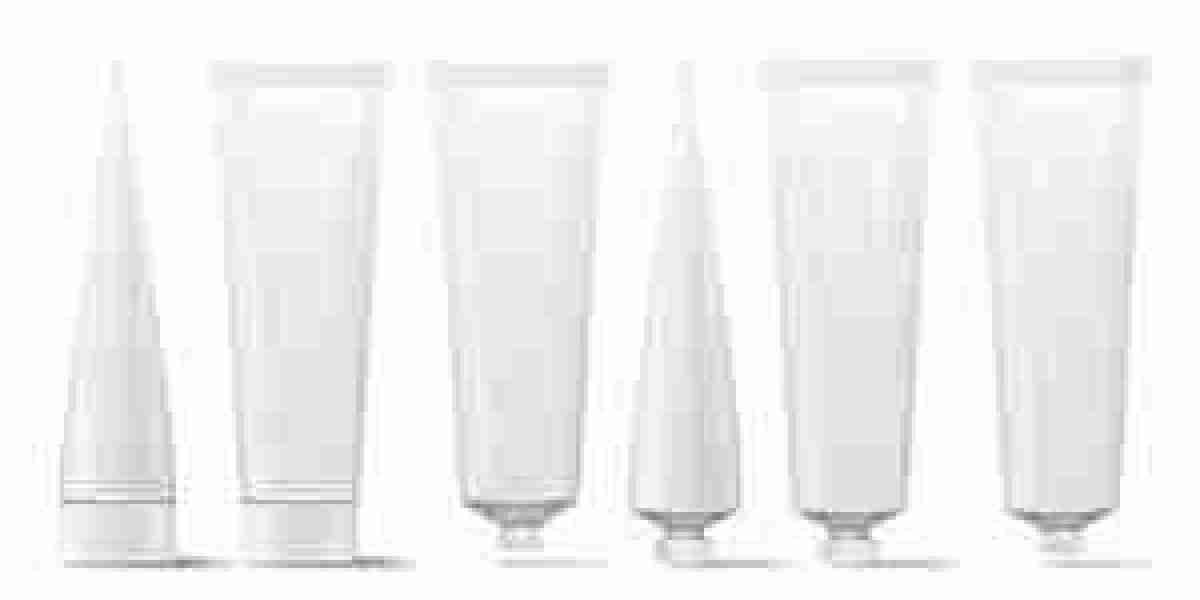The cosmetic tubes market has been witnessing significant developments due to increasing demand for sustainable packaging, innovative designs, and enhanced consumer preferences. The beauty and personal care industry’s focus on reducing plastic waste and adopting eco-friendly solutions is driving major changes in cosmetic tube manufacturing. As brands look for ways to differentiate themselves in a highly competitive landscape, advancements in tube materials, printing technologies, and customization options are shaping the market's future.
Growing Demand for Sustainable PackagingOne of the most prominent trends in the cosmetic tubes market is the shift toward sustainability. Consumers and regulatory bodies are increasingly pressuring brands to minimize environmental impact. This has led to the rise of biodegradable, recyclable, and refillable cosmetic tubes. Brands are now adopting post-consumer recycled (PCR) plastics, paper-based tubes, and plant-derived bio-resins to meet sustainability goals.
Companies like L'Oréal and Unilever are investing heavily in green packaging initiatives, ensuring that their cosmetic tubes align with the circular economy. Innovations such as mono-material tubes, which simplify recycling, are also gaining traction, enabling a more eco-friendly lifecycle for cosmetic packaging.
Material Innovations in Cosmetic TubesAdvancements in materials used for cosmetic tubes are revolutionizing the industry. Traditional plastic tubes are being replaced by hybrid solutions incorporating paper, aluminum, and bioplastics.
Aluminum Cosmetic Tubes: These tubes provide a premium look, ensuring durability and recyclability. Many luxury cosmetic brands prefer aluminum due to its ability to protect sensitive formulas from light and air exposure.
Paper-Based Cosmetic Tubes: Some brands are exploring paper-based solutions as an alternative to plastic. These tubes offer a natural aesthetic and contribute to reducing plastic waste.
Biodegradable and Compostable Tubes: Innovations in bioplastic technology have introduced materials that decompose naturally, reducing environmental harm.
Technological Advancements: Digital Printing and CustomizationCustomization has become a significant differentiator in the cosmetic industry, leading to the adoption of advanced digital printing technologies. Digital printing allows brands to create high-quality, personalized designs with vibrant colors and detailed textures without long production cycles.
Moreover, digital printing enables cost-effective short runs, allowing indie beauty brands to experiment with different designs and limited-edition packaging. Companies are leveraging AI-driven design techniques to create unique patterns and interactive elements, such as QR codes, enhancing consumer engagement.
Market Challenges and OpportunitiesDespite promising growth, the cosmetic tubes market faces several challenges. Supply chain disruptions, fluctuating raw material costs, and stringent environmental regulations can hinder market expansion. However, these challenges also present opportunities for innovation.
Recyclability Challenges: Many cosmetic tubes use multi-layered materials for enhanced durability, making them difficult to recycle. The industry is addressing this by developing single-material solutions.
Regulatory Compliance: Governments worldwide are enforcing strict guidelines for sustainable packaging. Companies investing in compliance and transparency can gain a competitive edge.
Consumer Expectations: The demand for aesthetically appealing and functional packaging is growing. Customization, tactile finishes, and smart packaging solutions (e.g., NFC-enabled tubes) are gaining popularity.
Future Prospects of the Cosmetic Tubes MarketThe cosmetic tubes market is poised for continued growth as brands invest in research and development to improve material sustainability, design aesthetics, and functional aspects of packaging.
Smart Packaging Integration: The rise of IoT and interactive packaging could lead to the development of smart cosmetic tubes that provide real-time product usage information.
Expansion of Refillable Tubes: More brands are adopting refillable packaging solutions, reducing single-use plastic consumption.
Growth in Emerging Markets: Rapid urbanization and rising disposable incomes in countries like India, China, and Brazil are fueling market expansion.
ConclusionThe cosmetic tubes market is evolving rapidly, driven by sustainability concerns, material innovations, and technological advancements. Brands that embrace eco-friendly solutions, digital printing, and consumer-driven customization are set to thrive in the coming years. With increasing global awareness about sustainability, the demand for innovative and responsible packaging will continue to shape the industry’s trajectory.
rohinishinde
234 Blog Beiträge



